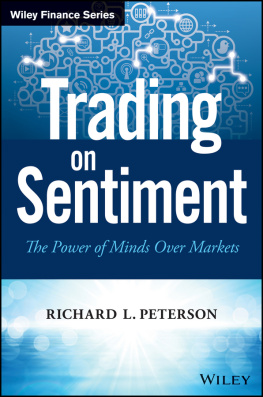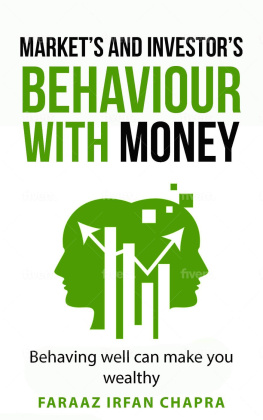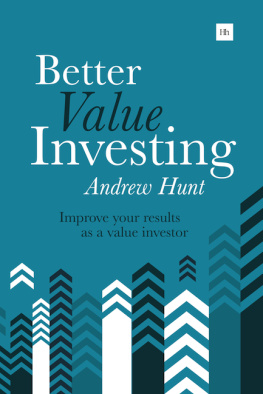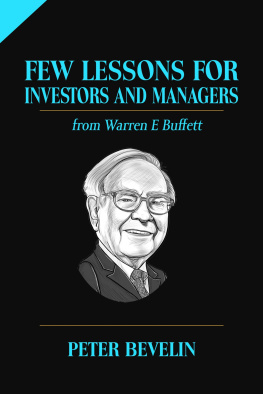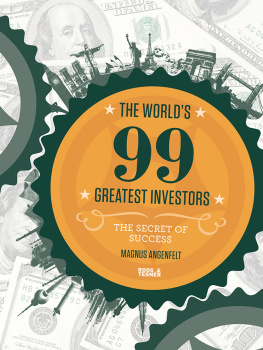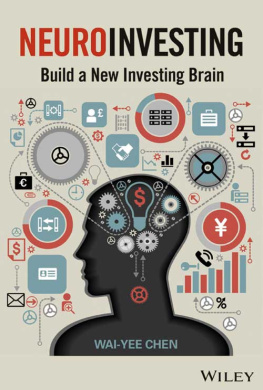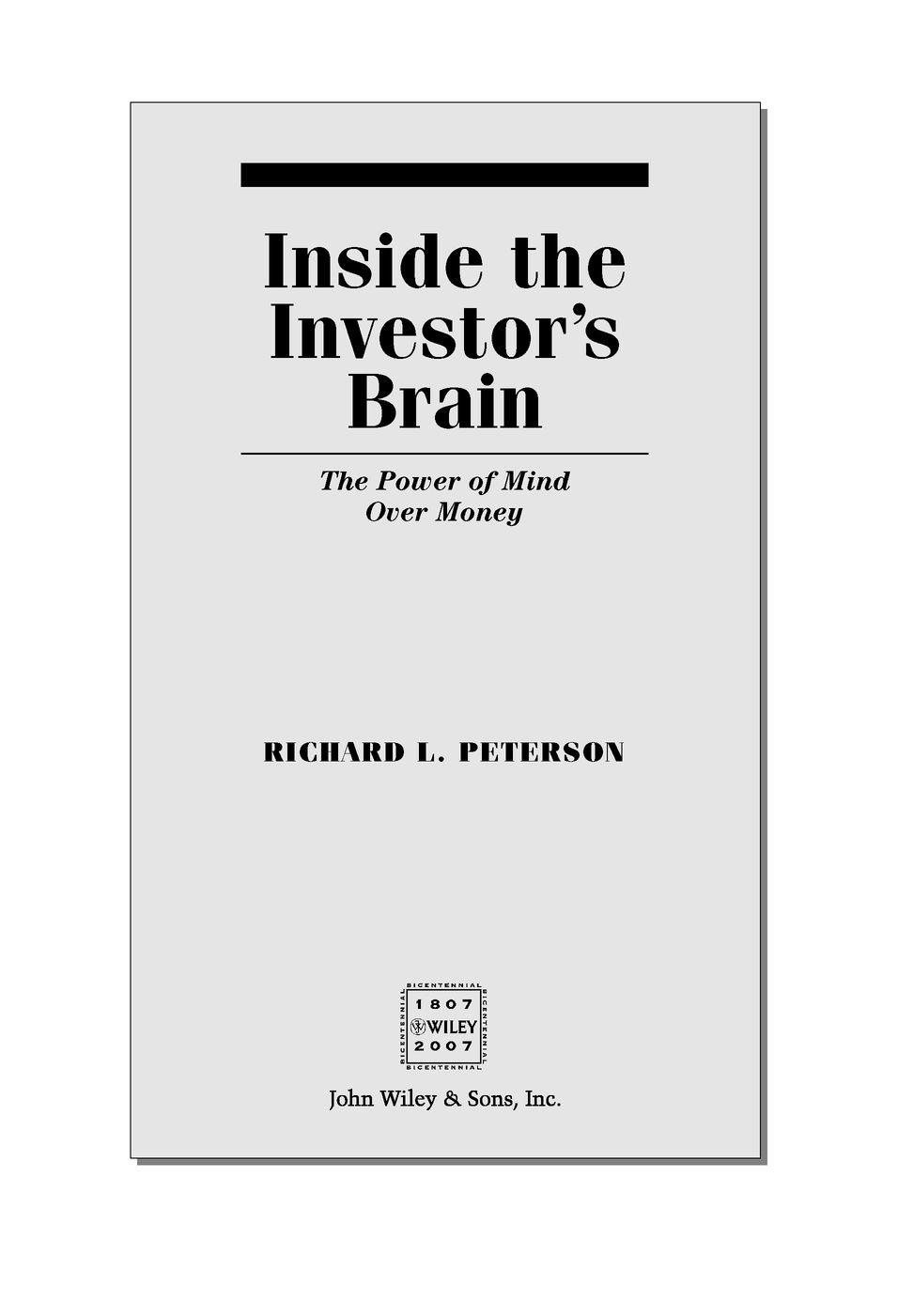Table of Contents
Founded in 1807, John Wiley & Sons is the oldest independent publishing company in the United States. With offices in North America, Europe, Australia and Asia, Wiley is globally committed to developing and marketing print and electronic products and services for our customers professional and personal knowledge and understanding.
The Wiley Trading series features books by traders who have survived the markets ever-changing temperament and have prosperedsome by reinventing systems, others by getting back to basics. Whether a novice trader, professional, or somewhere in between, these books will provide the advice and strategies needed to prosper today and well into the future.
For a list of available titles, visit our Web site at www.WileyFinance.com.
To Sarah.
Your grace, warmth, and ease light up my world.
You made this book possible.
Preface
This book isnt written for you. At least, its not intended for the rational, thinking you who was thrown off by that last sentence. This book is for the parts of you that were perturbed, the feelings that you cant quite access. Those feelings arise from deep in your brain, and theyre largely subconscious. To get to them, I have to go through youyou the reader.
And theres the catch. If thinking could make everyone a great investor, then there wouldnt be market bubbles and panics, poverty, addiction, or criminal greed. But we do have those problemsin part because the thinking brain evolved about 100,000 years ago, while the feeling brain is one of our most primitive endowments (something we share with our pets), and the two brains dont always get along. How to manage them both in the wild world of the financial markets is the subject of this book.
In the financial industry, most investment decision making follows a rational process until, often at crucial times, that process breaks down. Whether youre an individual investor, portfolio manager, financial adviser, trader, analyst, or member of an investment committee, odds are youve experienced the powerful effects of the psychological forces that move the markets. This book answers two questions for investors: What are the deep irrational forces driving investment behavior, and what can be done to better manage them?
GOOD INVESTING IS MORE THAN BOOK SMARTS
Good investing requires a basic financial education. Thats the straightforward part. However, to really excel in investing, youve got to learn the skills to manage yourself. Book smarts arent enough. Youve got to understand both the terrain of the markets and the topography of your mind.
This book is intended for educated investors (individuals, portfolio managers, venture capitalists, and bankers), financial analysts (security research, fundamental and technical analysts), and traders. Readers of this book will learn to identify subconscious mistakes (biases) in their financial decision making. Readers will develop an understanding of the brain origins of psychological biases, learn to recognize when they arise, and gain techniques for improving their financial judgment.
However, just because you know when youre likely to make a mistake doesnt mean you can stop yourself from doing it. Two methods are effective for learning to manage biases: personal experience and studying the examples of others. Gaining personal experience in the markets is costly. To enhance the study of others, this book contains examples of investors who have succumbed to biases, people who have overcome such mistakes, the decision-making tactics of great investors, and tips for creating an investment environment that supports effective decision making.
Much of the research on investor biases presented here is imported from the academic field of behavioral finance. Investigators in behavioral finance, in pioneering studies, have identified numerous systematic investing biases. Due to their origination in deep brain circuits, most biases influence investment decisions automatically and beneath awareness. When evidence from neuroscience, behavioral finance, and real-world practitioners is integrated, then a clearer picture of the fundamental issues and remedies is revealed.
ORGANIZATION OF THIS BOOK
Most chapters open with vignettes. Some are tragic, some uplifting, and some unusual. All are selected for the lessons they teach. The investors depicted in these stories are fabricated from my collective experiences with numerous individuals and through anecdotes I have heard from others. Any resemblance to real persons is completely coincidental.
In individual chapters, readers will learn to: (1) identify specific subconscious biases, (2) know when thinking and analysis will improve their investment process (and when it wont), (3) improve their emotional awareness, and (4) enhance the decision process.
One caveat: There is an emphasis on the neural origins of biases, yet few direct links between the brain and investment behavior have been proven. Nonetheless, this book attempts to simplify concepts and relationships as accurately as possible to make the discussion relevant to practitioners. In the introduction, the investment fallibility of Long-Term Capital Management, Sir Isaac Newton, and Samuel Clemens (Mark Twain) are used to illustrate some of the most basic and prevalent investor biases. Chapter 1 explains the challenges investors face in finding opportunities in a competitive marketplace, and it argues that the best remaining source of profits lies in understanding how other investors think. Chapter 2 educates the reader about basic brain structure and briefly reviews the research tools used in experiments. Chapter 3 describes the roles of belief and expectation in shaping ones experience. Chapter 4 is a discussion of neurochemistry including the common medications and substances that alter neurochemical balance and influence financial decision making.
Part II describes how various emotions impact judgment. Chapter 5 demonstrates the tremendous value of intuition and gut feel in investment decisions. Chapter 6 explains how overt emotions such as fear, excitement, anger, and sadness bias financial judgment. Chapter 7 looks at the brain origins and pathological investment effects of excessive greed and excitement. Chapter 8 examines the dangers presented by overconfidence and the hubris that results from a series of successes. Chapter 9 describes how anxiety and fear affect investor decision making, while Chapter 10 is specifically about stress and burnout. Chapter 11 describes pathological gambling, which affects some day traders and institutional rogue traders. Chapter 12 investigates the personality traits that contribute to investing excellence.
Part III is a review of the cognitive (thinking and perception) biases. While these biases are influenced by emotion, research has primarily focused on the mental mechanisms that underlie them. Chapter 13 briefly explains modern decision-making theory, and illustrates how information about outcome size, probability, and ambiguity biases choice. Chapter 14 investigates how the framing of a decision biases judgment. Chapter 15 explains loss aversion - which results in holding losers too long - both in amateur and professional investors. Chapter 16 is a discussion of how time perception, such as time discounting, generates investment biases. Chapter 17 is about the process of social influence and herding, and how it impacts investment decision making and investment committees. Chapter 18 explains the perceptual pitfalls that arise during chart reading and data mining. Chapter 19 is a discussion of biases in attention and memory that affect investors. Chapter 20 looks at investment risk taking from the perspective of the differing biology of women versus men and the aged versus the young. It also examines the (very limited) cultural differences between Eastern and Western investors.



